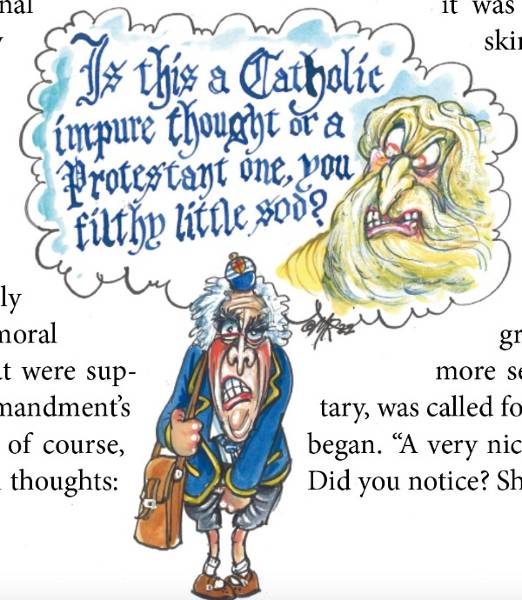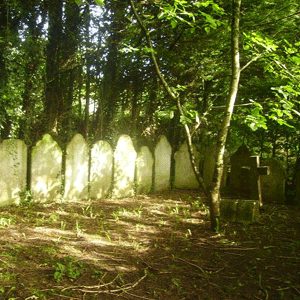At the Vatican, the stairway to heaven is often littered with bureaucratic hurdles and crowded with lobby groups. But whether it is a political tool whose overuse has devalued sainthood, as whispered by critics, or a brilliant mediasavvy way to set examples of virtue and faith, as argued by backers, saintmaking is an important part of John Paul II's papacy and its evangelisation efforts.
In fact, the figures of what some observers have called 'halo inflation' are whopping. Since the start of his pontificate in 1978, Pope John Paul has named 464 saints, more than those appointed by all his predecessors combined since the start of formal canonisation procedures in 1625. (Before that, saints were made by popular acclaim). Another 1,340 people have been beatified the stage before sainthood.
"If we see it from a global point of view, we may ask: what do we do with all these saints? But we have to see it from a local point of view," Monsignor Oscar Sanchez Barba tells me in his tiny, minimallyfurnished office a minute's stroll from the Vatican. "For a local church it is a great joy to have a blessed or a saint. The Pope knows this and, as a present, he declares a local saint or blessed almost every time he goes on a trip."
Sanchez Barba is one of about a hundred prelates working as postulators, special 'saint promoters' who lobby on behalf of deceased wouldbe saints and provide the Vatican's Congregation for the Causes of Saints with documentation and assistance.
His office is filled with dozens of thick, redbound books. Each one is a positio, a detailed and rigorous summary of the investigations undertaken by the diocese of the candidates to sainthood, a necessary document for submitting the cause to the Congregation. Barba is a very busy man: his country, Mexico, is fervently Catholic but has few saints, only 29 against the thousands of Europe.
"It's part of his brilliant global prophetic vision," says Sanchez Barba. "The Pope sees the great value of the example set by someone who had the same problems and pains as us but overcame them. They give us hope: if they made it, so can we."
Other Vatican observers agree, saying the 84year old Pope is seeking to provide modern Catholics with role models closer to their lives: it is easier to relate to lay people such as Maria and Luigi Beltrame Quattrocchi, a devout couple beatified in 2001, than to an oldtime nun.
Critics think otherwise. "We see the same anxiety for conquest that pushes companies to identify, measure and study market areas to propose to every segment the product it dreams about," wrote Italian newspaper Il Foglio after the controversial canonisation of Opus Dei founder Josemaría Escrivá de Balaguer two years ago. "Canonisation does not seem to be about individual candidates anymore, but about the group which identifies itself with a candidate and pushes for the award to come as soon as possible."
And even if the Vatican has always denied political motives, some canonisations seem to harbour political undertones and promote certain Popebacked values.
On October 1, 2000, the famously anticommunist John Paul II canonised 120 Chinese martyrs. The date is also China's National Day and Beijing, which does not recognise the Pope's authority, attacked the move as a glorification of imperialism. The Pontiff, according to Reuters news agency, replied that he simply wanted to honour all Chinese, "comfort and sustain" Chinese Catholics and that the chosen day was not political but was the feast of St Therese of Lisieux, patroness of missions.
Regardless of who was right, the figures suggest the Pope's possible intentions. According to the Vatican, millions of Chinese do not adhere to their country's statebacked church, are loyal to the Pope and worship in secret.
But even amid this delicate sainthood diplomacy, the essential condition for accessing the holy ranks continues to be miracle making, at least officially. Only martyrs, such as the Chinese saints, are excused from this rule.
Beatification requires one miracle, as does canonisation, and all miracles have to be certified. The easiest ones to 'prove' are healings: doctors are asked to testify whether a certain healing defies any current medical explanation. Not all miracles appear spectacular to the outside observer. Take the one ascribed to Karl I, the last emperor of the AustroHungarian empire healing a nun of her varicose veins and sores. Karl I was beatified in October, causing an outcry in his own country, with critics pointing out that his army used poison gas during World War I.
But miracles are important to the Vatican, as argued two years ago by one of Italy's most famous leftist columnists: "Nonbelievers would prefer ... for miracles to have nothing to do with canonisation. I understand this would make them less useful in the society of the spectacle and would not move the crowds," wrote Eugenio Scalfari in l'Espresso.
Last but not least, saintmaking takes time and money. Some Vatican observers estimate total costs can reach £500,000. But the figures vary greatly depending on the fame of the candidate, on how easy it is to investigate his/her life and on the grandeur of the sainthood ceremony. (Only major personalities such as Escrivá, Mother Teresa or Italian cultfigure Padre Pio get big ceremonies.) Sanchez Barba places the cost of a smaller celebration at around £ 1520,000.
The dioceses or orders don't really get an economic return from their saintly investment. Only in the case of massive cults like Padre Pio's, a moneymaking machine even before sainthood, can we suppose his canonisation may have brought even more cash. The publishing ventures connected to the monk are alone said to be worth some £18 million.
Meanwhile, the saint factory shows no signs of slowing down. The Congregation has some 3,000 cases on its hands, while thousands more are in the preliminary phase.

